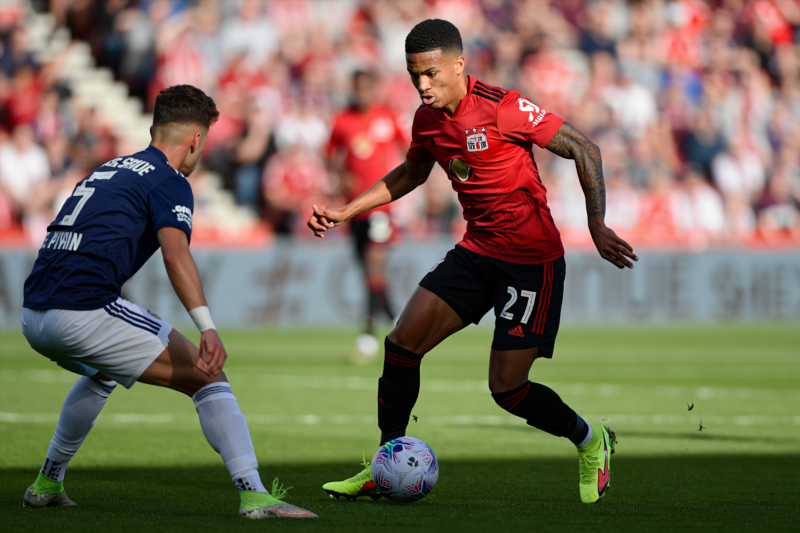
Attacker and Defender Strategies Enhance Player Performance Effectively
In the high-stakes world of sports and competitive gaming, understanding the distinct roles and strategies of attackers and defenders is paramount to elevating team performance. Whether you’re coaching a soccer team, analyzing professional gameplay, or developing training programs, recognizing the nuances of each role can lead to smarter decision-making, better teamwork, and ultimately, victory. This article delves into the tactics employed by attackers and defenders, offering expert insights and actionable tips to optimize your game today.
The Critical Difference: Attackers vs. Defenders
Understanding the Roles
- Attackers: Their primary goal is to create scoring opportunities through precise movements, timing, and creativity.
- Defenders: Their role focuses on preventing the opposition from scoring by intercepting, blocking, and disrupting attacking plays.
Role-specific skills are essential. While attackers thrive on agility, creativity, and boldness, defenders excel through anticipation, positioning, and resilience.
Why Strategy Matters
A well-balanced team employs complementary attacker and defender tactics. Misunderstanding or neglecting these roles can leave gaps in defense or squander scoring chances.
Strategies for Attackers: Creating Opportunities and Beating the Defense
Key Attacker Tactics
- Constant Movement and Rotation: Keeping defenders guessing through unpredictable movements.
- Effective Off-the-Ball Awareness: Recognizing spaces and timing runs to exploit gaps.
- Deception and Fakes: Utilizing feints, body movements, or dribbles to bypass defenders.
- Precise Shot Selection: Choosing high-percentage shots based on positioning and goalkeeper behavior.
Enhancing Attacker Effectiveness
| Tactic | Purpose | Tips for Implementation |
| Unpredictability | Break down defensive formations | Mix dribbling, passing, and movement patterns |
| Spatial Awareness | Identify and exploit weak spots | Use video analysis to study opponent tendencies |
| Quick Decision-Making | Capitalize on fleeting opportunities | Foster scenarios in training that simulate game pressure |
| Team Synchronization | Create overload situations or overloads | Practice coordinated runs and passing sequences |
Strategies for Defenders: Disrupting Attacks and Maintaining Solid Defense
Key Defender Tactics
- Positioning and Zoning: Maintaining optimal positions to cover critical areas.
- Anticipation and Reading Play: Predicting attacker intentions to intercept or block.
- Physicality and Resilience: Using strength to challenge attackers effectively.
- Communication: Coordinating with teammates to avoid gaps.
Improving Defensive Performance
| Tactic | Purpose | Tips for Implementation |
| Video Analysis | Spotting attacking patterns | Study opponents’ attacking trends to anticipate moves |
| Defensive Drills | Reinforcing positioning and tackles | Incorporate simulated attack scenarios emphasizing quick reactions |
| Communication Drills | Ensuring team cohesion | Use calling and signaling exercises to streamline on-field communication |
| Mental Toughness | Maintaining focus under pressure | Train resilience and confidence through scenario-based training |
Combining Attacker and Defender Strategies for Optimal Team Performance
Achieving synergy between offensive and defensive tactics enhances overall team effectiveness. When attackers understand how defenders operate, they can adjust their runs and shots accordingly. Similarly, defenders aware of attacker tendencies can anticipate movements and disrupt plays preemptively.
Integrated Practice Sessions
Design drills that involve both attacking and defending components. Examples include:
- Counterattack Scenarios: Transitioning quickly from defense to attack.
- Pressing and Holding: Attackers pressing high to force turnovers, while defenders stay organized.
- Set-Piece Drills: Coordinating offensive and defensive set plays to maximize scoring chances and prevent conceding.
FAQs: Common Questions About Player Tactical Roles
Q1: How can I train my players to improve their attacker or defender tactics? A1: Use scenario-based drills that mimic real-game situations, focus on video analysis to identify areas for improvement, and incorporate drills that emphasize specific skills like positioning, movement, and decision-making.
Q2: What are the most common mistakes attackers and defenders make? A2: Attackers often rely too much on individual skill without team coordination; defenders may be too passive or out of position. Consistent training and game review help correct these errors.
Q3: Can a player excel in both attack and defense? A3: Yes, especially in flexible roles like a full-back or a box-to-box midfielder. Developing versatility requires targeted training to enhance both offensive and defensive skills.
Understanding the distinct yet interconnected strategies of attackers and defenders is essential for elevating individual and team performance. By integrating expert insights, employing tailored drills, and fostering communication, teams can effectively break down opposition defenses and create scoring opportunities. Continual learning and strategic adaptation are key to maintaining competitive advantage in any sport or game.
Take Action Today: Review your team’s tactical approaches, identify areas for improvement, and implement targeted drills to develop attacker and defender strategies. Start transforming your performance now—success awaits those who master the art of strategic play.